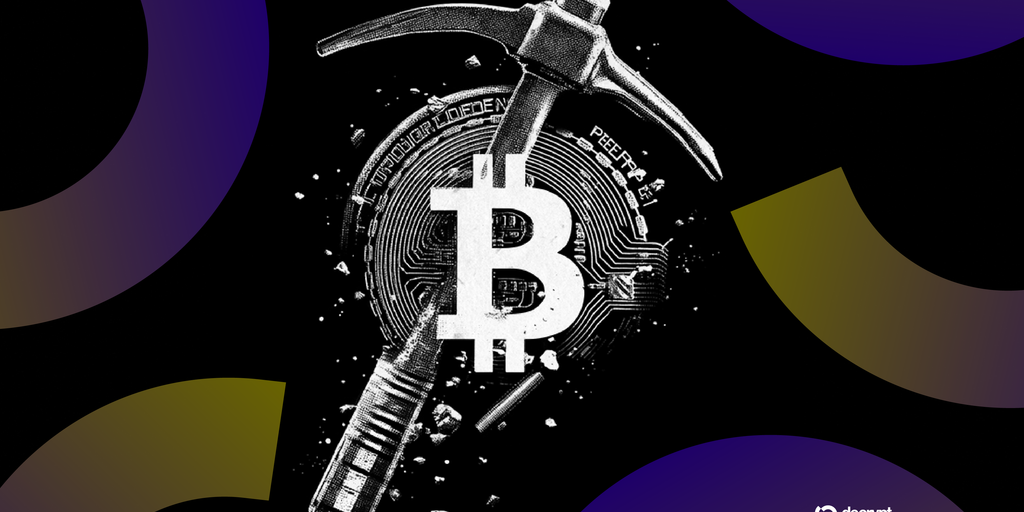Bitcoin Mining’s 2026 Risk: Control Shifts From Hardware to the Software-Contract Stack
As 2026 approaches, miners face less-visible threats: pool software, firmware, and power contracts that can steer hash rate—while AI competition nudges energy costs higher.

Because Bitcoin
November 19, 2025
The narrative around 2026 has centered on halvings, machine efficiency, and price volatility. That misses the real pivot: control in Bitcoin mining is migrating away from ASIC iron and toward the software-contract stack—pool code, firmware, lenders’ covenants, hosting terms, and power market dynamics. If you care about who actually steers hash rate, this is where leverage now lives.
Here’s the hinge. A 2025 review showed that six mining pools collectively produced more than 95% of blocks. Pools decide which transactions are included or excluded in block templates. Bitcoin’s censorship resistance holds as long as those pools avoid collusion—but the practical gatekeeping happens upstream of the protocol. Regulators, business partners, or risk teams do not need to touch Bitcoin Core to exert pressure; they can push on payout systems, template policies, or KYC checks embedded in pool and firmware software. The result could be delayed payouts, template-based filtering, or account freezes—changes that feel operational, not ideological, yet meaningfully shape miner incentives.
Contractual mechanics amplify that risk. Lenders, firmware vendors, and hosting providers often embed triggers that can redirect or curtail hash power without an operator flipping a single switch. Meet a covenant, hit a margin threshold, breach a site condition—hash migrates. That’s a very different threat model than a traditional hardware cycle; it’s soft power routed through agreements and management software, not brute-force capex.
Energy access adds another layer. Since Bitcoin’s launch, viable sites often hinged on power below $0.03/kWh. Those locations now draw AI data centers, compressing the supply of cheap electrons. The U.S. Energy Information Administration’s latest short-term outlook projects wholesale electricity prices around $51 per MWh in 2026—about 8.5% above current levels—tilting breakevens for operators that lack behind-the-meter optionality or demand-response income. Even a 50 MW agreement offers less comfort than it used to; higher bidders or revised hosting terms can displace capacity, stranding miners or forcing costly renegotiations.
It’s not one-way risk. Experienced operators highlight that pools are not immutable bottlenecks; payout changes or reliability hiccups can trigger rapid hash migration. Miners are also geographically flexible. They can monetize stranded generation, operate where fiber is thin and permitting is messy, and accept negative pricing, curtail on command, and help stabilize intermittent renewables—services AI workloads typically cannot or will not provide. That asymmetry still wins miners deals AI cannot absorb. Meanwhile, network data shows hash rate has reached record highs even during low-fee periods, suggesting the market has partially digested lower subsidy dynamics. And, yes, disasters and insurance friction are normal across industrial sectors, not unique to mining.
What to prioritize in 2026: - De-risk the software layer: diversify pools, prefer transparent template policies, and structure non-custodial or “trust-minimized” payout flows. - Treat firmware like a critical dependency: audit update rights, kill-switch behavior, and any automatic hash redirection features tied to loan or hosting covenants. - Renegotiate power optionality: secure behind-the-meter access, formalize curtailment revenue, and add clauses that protect capacity from opportunistic reallocation. - Model “soft censorship” costs: simulate fee revenue under different template rules and compliance overlays; assume friction emerges outside the protocol.
Miners who react as if the next cycle is a hardware race will feel slow. The competitive edge now comes from contract literacy, software governance, and energy optionality. Control has moved; margins will follow.
